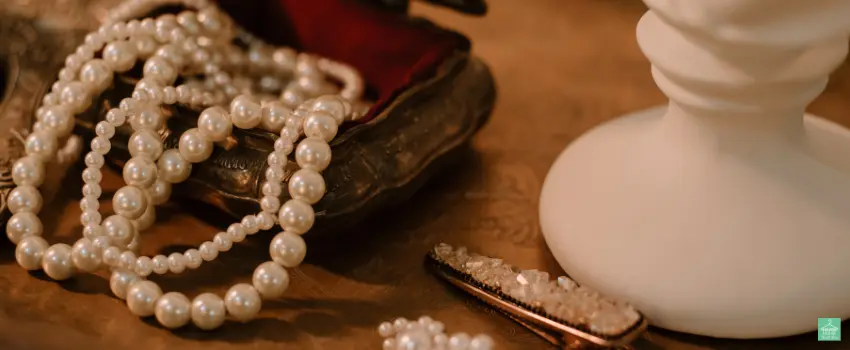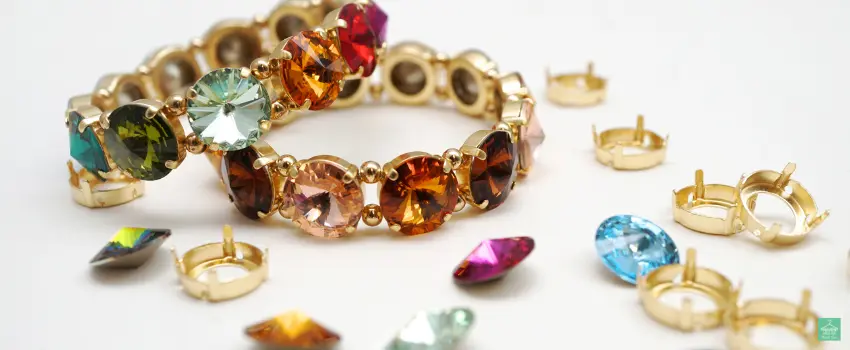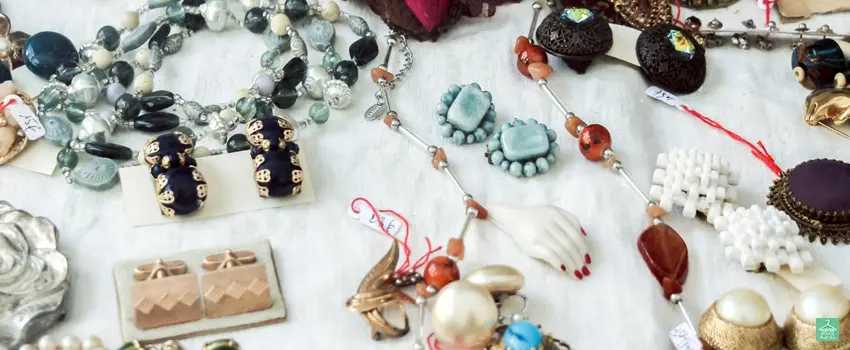The thrill of thrift shopping is that you’ll never know what you’ll find next. After rummaging through dozens of racks and piles, finding designer pieces for less can be a rewarding experience. You might stumble upon vintage jewelry pieces if you get lucky.
However, unlike clothes, it can be tricky to buy thrifted jewelry if you don’t know what to look for. The worst thing that could happen is that you might buy an expensive piece only to discover that it’s fake! To avoid these situations, follow these practical tips to know what to look for in vintage jewelry pieces.
Tips for Buying Vintage Jewelry in Thrift Stores

Thrift stores are great places to look for vintage jewelry if you want to start your collection. But before you head to the nearest thrift store, you need to know what to look for in vintage jewelry to avoid buying unnecessary pieces.
1. Do your research.
Not all vintage jewelry is the same; there are fine and costume jewelry. The main difference between the two types of jewelry is their materials. Fine jewelry is designer pieces made from high-quality precious metals and gemstones, while costume jewelry is made from cheaper materials like wood, plastic, glass, and stones.
So if you’re looking for pieces that will last a long time, buy jewelry made with your preferred materials. It helps to research the price range for vintage jewelry to set your expectations on what to pay for. You can do this by browsing online vintage jewelry retailers. Authentic vintage pieces made of real gold and diamonds are usually pricey. So if you encounter a vintage designer piece priced much cheaper, it is likely fake or costume jewelry.
2. Look for identification guides.
It’s essential to familiarize yourself with vintage jewelry’s characteristics to ensure you’re getting the real deal. These characteristics vary and depend on the period the pieces were produced.
For example, Victorian era (1830 to 1900) jewelry pieces had intricate hand-made carvings and were commonly adorned with various gemstones like pearls, opals, amethysts, and emeralds. Meanwhile, caliber-cut gemstones and platinum materials are more common for pieces from the retro era (1930 to 1940s).
If you want to be more specific and familiarize yourself with each period’s distinct styles, in-depth guides are available online that break down the features of vintage jewelry per era.
3. Check the condition of the item.

Just like with clothes, thrift store jewelry also varies in condition, especially vintage ones. Since you’re buying thrifted jewelry, you can expect wear and tear in some pieces. A few scratches are okay, but you must be mindful of specific defects that can affect a piece of jewelry’s value and quality.
Be on the lookout for missing gemstones because these can be difficult to fix. Also, take note of loose prongs, broken clasps, and chains that could cost you extra to repair.
4. Check for authenticity.
Knowing how to authenticate jewelry will help you get the most valuable thrift store finds. Thankfully, there are many ways to determine the legitimacy of your thrift store jewelry finds:
-
-
- Use magnets. This method is a convenient way to test the authenticity of any thrift store jewelry. You only need to place a small magnet on any metal to check if it will stick. Most precious metals are non-magnetic; if a magnet sticks to a piece, it’s likely fake.
-
-
-
- Look for missing flakes. When shopping for valuable thrift store finds, it pays to scrutinize small details to ensure you’re not getting a replica. You can bring a magnifying glass to look for missing flakes on gold and silver accessories. Doing this will determine if the item is only plated or authentic.
-
-
-
- Do a breath test. You can do a simple breath test for thrift store jewelry pieces with diamonds to check their authenticity. Blow on the stone and check if it gets foggy immediately. Natural diamonds will not retain heat from your breath, while a fake one will get foggy immediately.
-
-
-
- Sniff metals. Believe it or not, you can determine if a piece of jewelry is fake through its smell. Authentic silver pieces are odorless. So if you smell a hint of sulfur or metallic scent in a silver accessory, it indicates that it’s not entirely made of sterling silver.
-
-
-
- Look for markings and stamps. Real silver and gold jewelry pieces have markings and logos set by the manufacturer or silversmith. Sterling silver accessories have numerical symbols like 925, 900, or 800 to indicate their purity level. On the other hand, gold pieces include the number of karats it has, like 10K, 14K, and the like.
-
5. Ask for assistance.
If you have a specific piece in mind or don’t know which jewelry to look for at thrift stores, you can save time by asking for assistance from the staff. Most of the time, thrift store employees keep track of their inventory, and they can point you to exciting pieces or new arrivals. They can also give additional valuable insights if you’re choosing between pieces. In some cases, employees can also give a little information on where the item came from.
Conclusion
When shopping for vintage jewelry at thrift stores, it is important to be patient, persistent, and knowledgeable. Knowing how to shop for vintage jewelry at thrift stores is a valuable skill that can lead you to valuable pieces worth the investment. With these expert tips, you will be prepared to enjoy the hunt for remarkable pieces.
Find unique and valuable vintage jewelry at Haven House Thrift Store.
If you want to build your vintage jewelry collection, head to Haven House Thrift Store for quality vintage jewelry worth the money. As one of the most-trusted Destin thrift stores, we take pride in offering only the best finds money could buy with excellent customer service to help you get the most out of your thrift shopping experience.

